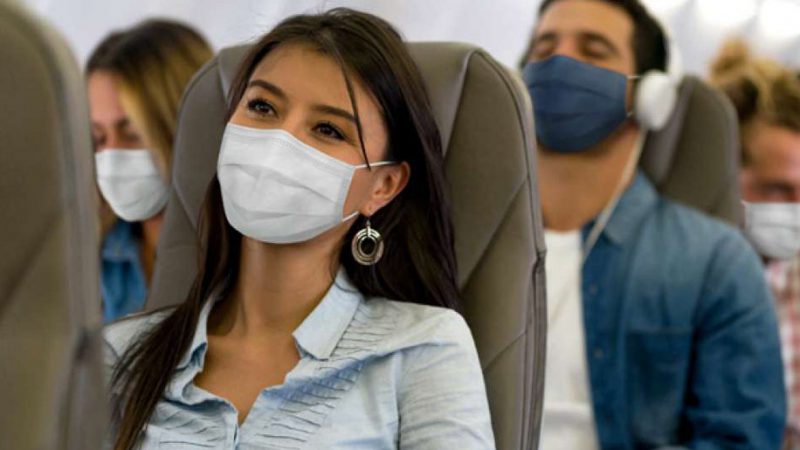Harvard Study Finds “A Low Risk” of COVID-19 Exposure on Aircraft
Report shows risk of transmission inflight is lower than other common settings, such as a grocery store or indoor restaurant
October 29, 2020


The scientific evidence shows a low risk of SARS-COV-2 transmission on aircraft, according to just-released research by the Aviation Public Health Initiative, a project of the Harvard T.H. Chan School of Public Health.
Phase One of the study, which focused on the risks onboard the aircraft, concluded that because of the frequent exchange of air and HEPA filters on planes, over 99 percent of the particles containing the virus are removed from cabin air.
This effectively counters the presence of other passengers during flights, reducing the possibility of exposure to COVID-19 lower than other common settings, such as a grocery store or indoor restaurant, the study says.
By taking a layered approach to risk mitigation, such as requiring face masks and frequent disinfection,[https://www.businesstrastg.wpengine.com/business-traveler-usa-story/harvard-study-disinfecting-masks-essential-to-healthier-flying] it is possible to reduce the public health risks of flying during the COVID-19 pandemic.
“Our team found that, together with their high-performing ventilation systems, the actions that the airlines put in place – including mandatory use of face masks – significantly reduce risks of viral transmission aboard an airplane,” said Leonard Marcus, co-director of APHI.
The Harvard research mirrors a recent Department of Defense studythat found “the overall exposure risk from aerosolized pathogens, like coronavirus, is very low” aboard aircraft.
In addition to the air filtration systems, Harvard researchers recommended adherence to a layered approach to mitigating the risk of COVID-19 transmission, including:
• Universal wearing of facemasks by passengers and crew throughout the journey;
• Distancing protocols and provision of strong ventilation during boarding and deplaning;
• Disinfection of high-touch aircraft surfaces to remove contamination;
• Passenger attestations that they do not have COVID-19 related symptoms and commitment to adhere to airline mask policy.
“With comprehensive adherence to these preventive measures by airlines and passengers, air travel, along with other sectors of society, can responsibly return to some level of normal activity as we await development of an effective vaccine,” said Marcus. But he cautioned that any individual’s decision to engage in any public activity, including flying, must be balanced by personal health considerations.
The study is sponsored by a consortium of airlines, aircraft manufacturers and airport operators. The second phase of the report will focus on the curb-to-curb airport environment, which will examine testing, the indoor air environment of airports, and other measures to reduce risk of disease transmission.
The full report and report highlights can be found here.




